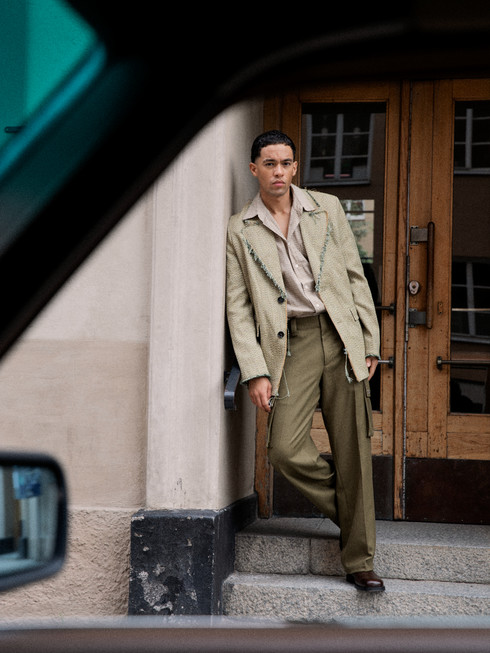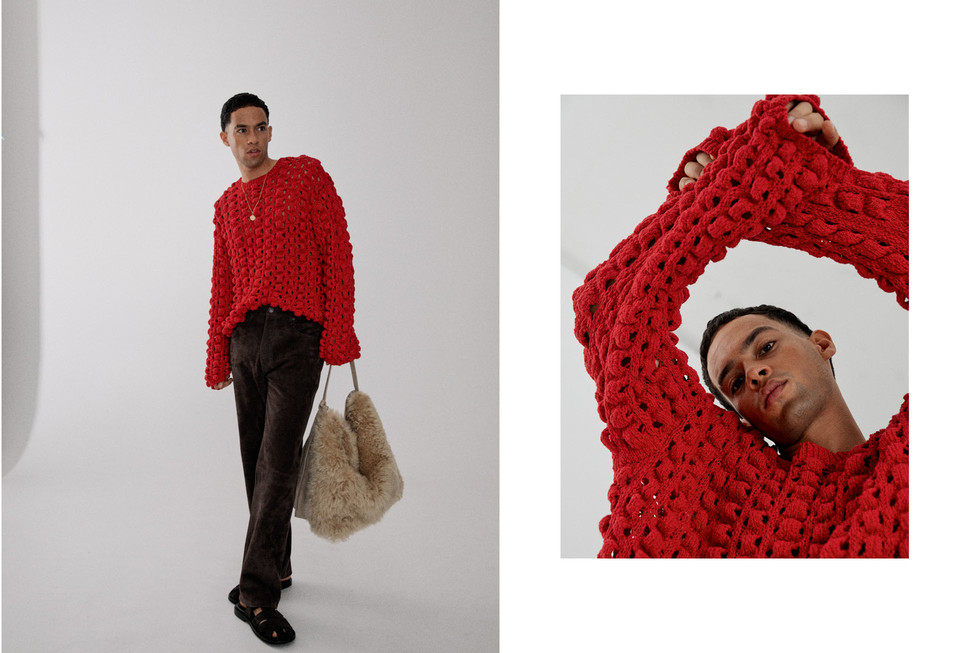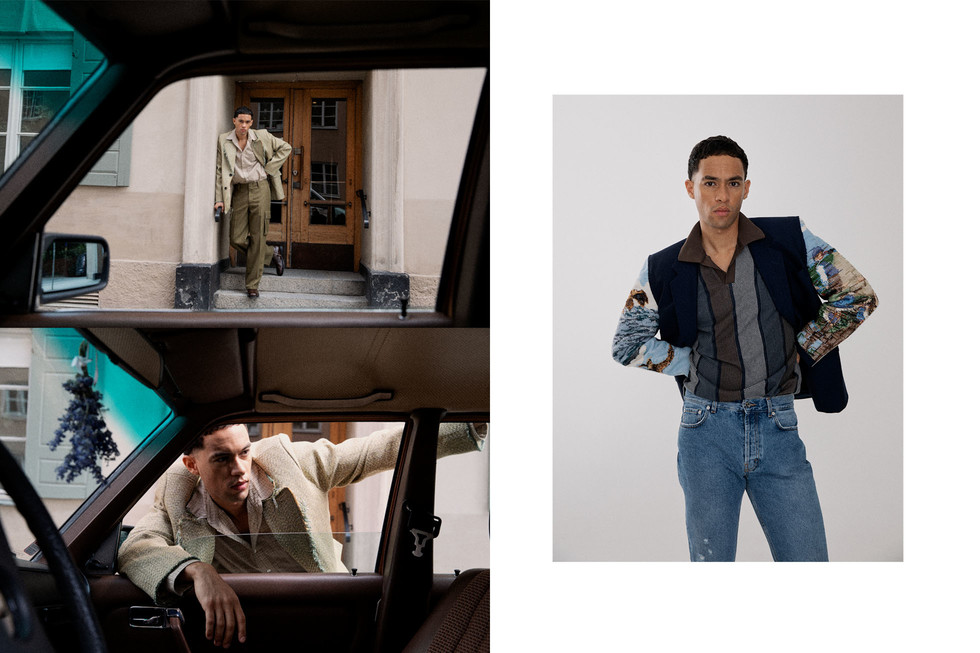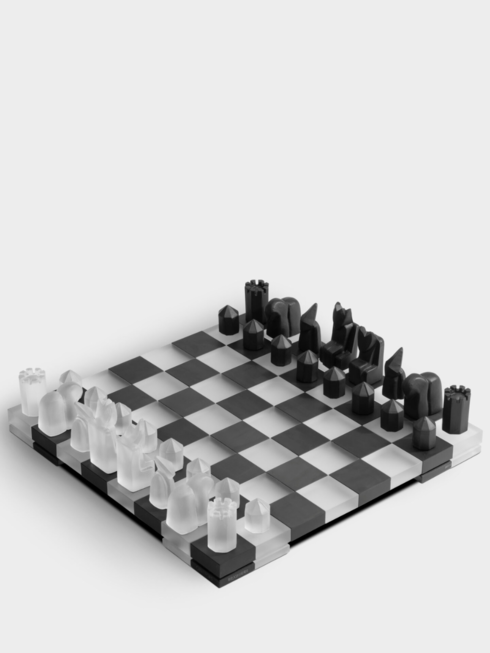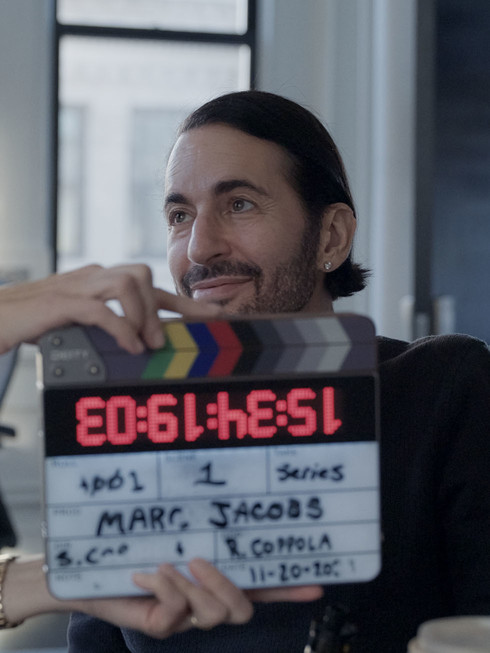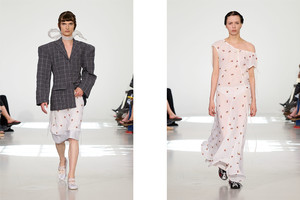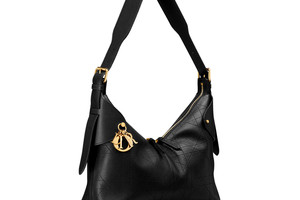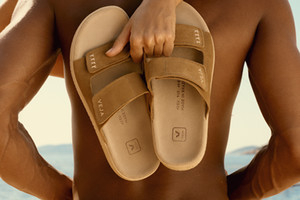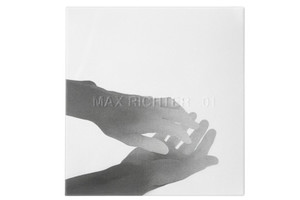Swedish designer Johan Lindeberg and the brand spearheaded by his daughter, Blue Lindeberg, Jay3lle, join forces with Orrefors to create an exclusive handcrafted glass chess set. Made by Orrefors master glassblowers, each piece reflects meticulous Scandinavian craftsmanship and artistic influences from Ingmar Bergman’s symbolic cinema and John Selbing’s evocative photography. This collaboration transforms a classic game into a striking art object, embodying the creative spirit of JAY3LLE and celebrating the legacy of Swedish glassmaking, transforming a classic game into a striking centrepiece that reflects the brand’s visionary blend of tradition and innovation.
Natalia Muntean: Could you talk a little bit about your collaboration with Orrefors - what drew you to collaborate with them, and how the idea of a glass chess set came about?
Johan Lindeberg: I’ve always been collecting glass, buying old vintage pieces and so on. I’ve been very fascinated by Orrefors specifically and by Swedish glass development in general - Scandinavian design. So I contacted them and said, why don’t we do something together? With this new brand I'm creating, I want to do a lot of collaborations, especially unexpected ones.
We sat down and talked. They were looking for ways to reposition Orrefors, to make it more modern again. I said, I think it’s amazing, let me help you, let’s do something together. Then I sat down with my team at my barn outside Båstad and said, let’s do a chess game in glass. I presented the idea, and Orrefors loved it. They became very passionate about it.
There’s also an interesting story behind it. My father was one of the best bridge players in Sweden. He was captain of the national team and wrote books on bridge. I was very anti-games when I was younger because I had to sit and watch all these bridge players. But with chess, I’ve always been fascinated by the strategic tactics; it’s a bit like building a brand, to be honest. I was in New York and asked this guy in Washington Square Park to teach me. I paid him and took lessons there, with the guys sitting around playing chess. That’s how it started.
The new brand I’m doing is also about creating a kind of country club environment. That’s been my dream since I started J. Lindeberg, and now more than ever. So for me, the chess game is a natural hub - a creative meeting point for that kind of world.
NM: So it’s sort of like a transition into your next endeavour, so to speak?
JL: Yes, it’s a transition. That’s why I’m here in Italy; we’re working on it. We’ve done soft launches: a collaboration in golf, and now the chess game. But we haven’t launched the brand properly yet. That’s planned for October.
NM: Congratulations on releasing your biography! How does that feel to have that out?
JL: It’s amazing. I’ve gotten great feedback. I think it became the number-one book in Sweden. It’s very emotional, very honest, about my career, all the twists and turns in my life, the spiritual search, relationships, brand building… my journey in life. It’s as honest as it gets.
NM: Was it scary to put yourself out there in a more vulnerable way and reveal more of yourself?
JL: I think people in Sweden know I’ve always been quite open, honest, vulnerable - sharing what I feel. But yeah, I really let the reader enter my world. The title is What I See When I Close My Eyes, so yeah, it’s really honest. It was very emotional to write. I struggled with doing the audiobook because I had to read it again, and I was supposed to do it myself. It’s very emotional.
NM: How did you decide to write a biography?
JL: My daughter, during COVID, said to me, Why don’t you share your story? I was also tired of explaining all the time about J. Lindeberg and everything else. I thought, okay, I’ll write it all down so people can see what’s been driving me, what I’ve been fighting for: my values, my ideas.
Also, the struggles I’ve had trying to get investors to understand my vision. I thought it would be better to explain everything so it comes from me, instead of everyone interpreting or guessing. There have been a lot of ideas out there - who I am, why I’m not with J. Lindeberg anymore, why this, why that. It felt really good to explain it from my perspective.
NM: And have you gotten any feedback from readers who’ve said things like, “I finally understood,” or “I saw a different side of you,” or “I changed my opinion about you”?
JL: Yes. In particular, some people who’ve worked for me read it immediately. They said they were crying and laughing, that they couldn’t stop reading, and they admired how I’ve been fighting for what I believe in.
I think it’s also a book people will go back to and read again. There’s a lot you can learn from it, regardless of age. I had the guts to take steps that followed my heart. It’s quite a special story.
NM: That sounds wonderful. But if we can go back a little to the chess set. I read that it’s inspired by Ingmar Bergman’s The Seventh Seal and John Selbing’s photography. Could you tell me a little more about how those influences shaped the design process?
JL: I mean, from an Orrefors’ perspective, definitely The Seventh Seal. That film was shot very close to my barn in Hovshallar. I’ve always been very intrigued by that scene, of playing chess with Death.
John Selbing is someone I discovered when I went through the Orrefors archive. He had been shooting photography, and Orrefors really liked my photography and could see similarities between mine and his. So we started discussing that a lot.
But the chess game itself has a very strong Middle Eastern inspiration, from vintage Middle Eastern chess games. In this new brand, I’m including the Middle East. I’ve always been very passionate about the region.
I travelled a lot there in the 80s. I was in Cairo, Damascus, Tehran, and Tunis. I’ve also spent a lot of time in Morocco, studying and photographing, doing documentary shoots with my ex-fiancée, who’s Tunisian. I wanted to include a Middle Eastern aesthetic in certain pieces.
So it’s really inspired by a vintage chess game from the Middle East. Also, I live permanently in Riyadh now.
NM: What attracts you to the Middle East and to the design influences there?
JL: Yeah. I’ve always been inspired by the aesthetic. I think Middle Eastern women have something very attractive, particularly the eyes, the eyeliner, and the jewellery. I’ve always been fascinated by that. I think it’s really powerful.
And then, aesthetically, colour-wise, food-wise, I’ve always been very inspired by the desert. For me, it stands for freedom and space. That’s something really amazing. So I wanted this new brand to have a Middle Eastern part to it.
I had an idea to include Beirut because I have a creative community there. I’m very close with a filmmaker; she’s an Oscar-nominated Lebanese filmmaker in Beirut. I’m also close to a creative community in Marrakesh, and I have friends in Tunis as well.
Then I met two sisters in New York, one of them really represents the new generation in Saudi Arabia. Sixty-five per cent of the Saudi population is under 30, so what’s happening there now is the biggest transformation in the world. I decided to move there and be part of this new energy in the Middle East, which I think will be the new centre of the world.
I also have a dream to create a Country Club in the desert. I’m really known for golf, you might know that my name is very associated with golf through J. Lindeberg. So I wanted to create this new brand, Jay3lle, which is basically my initials, and with that, build a real Country Club resort with a golf course and super cool architecture. The chess game is going to stand in the centre of it; it’s like the first piece, the first step in creating the Country Club in the desert.
NM: Is the Country Club connected to Jay3lle, the brand you have together with your daughter?
JL: Yes, exactly. I have a new CEO, and it’ll be official soon. Her name is Princess Noura, she’s from Saudi Arabia, and she’ll lead this brand. The location is going to be Riyadh, and the idea is to create a Jay3lle Country Club, but it’s also a collection, a full lifestyle. When I think and design, even when I did the chess game, I was thinking about the Country Club.
NM: Okay, so it wasn't just a one-time thing.
JL: That was the inspiration to create J. Lindeberg in 1996. The first press release says, “Never been comfortable in a country club. Johan Lindeberg wants to change golf.” So in 30 years, I wanted to create this country club, and now I hope to be able to fulfil my dream.
And the first step is the chess game, the first piece in the puzzle, because it’s very symbolic. It will stand… It’s beautiful, it’s like an art piece. It’s very expensive, and it’s done by hand. I’m super proud of how we inspired and how they developed it with their hands. It’s amazing.
So it’s basically a masterpiece. I think it’s like an artwork, and it’s going to stand in the middle of the country club. That’s how I see it. It’s something to really gather people. And I think chess today is also in a very strong trend. It’s incredible when it comes to tactics and thinking. That’s why I’m also doing the parallel with the game of bridge, because I think it has a lot of similarities.
NM: Could you tell me a little bit about the process and what was the most challenging aspect of creating this set out of glass?
JL: I think it was a welcomed challenge for Orrefors because of the process; they had never done anything similar. And I think it also inspired them to go back a bit to the roots again. Because it’s very raw, it’s a very raw piece. It’s handcrafted. We wanted that kind of shape because it has that Middle Eastern energy and Scandinavian clarity in a new, modern way.
NM: You mentioned the Middle Eastern influences, and then Ingmar Bergman, and then a little bit of Selbing photography. How do all of these elements coexist in the final design? And which detail are you most proud of?
JL: I think of Ingmar Bergman and, you know, the dark winters in Sweden. I also think of the Bedouin culture, the borderless nature of it. For me, it’s like my mind.
If you study my photography, you will really understand. The way I photograph has a strong presence and also carries a bit of Ingmar Bergman energy in it.
But I think it’s all about nerve in the end. It has depth. Depth and nerve.
When you see this chess game, it’s not decorative specifically. You feel that it has a strong presence and energy. It’s really a powerful piece.
If you’re talking about Bergman, you can feel the emotional presence and strength. I think it’s the same thing - if you were sitting in the desert playing chess. Ingmar Bergman could have made an amazing movie in the desert because it has that characteristic of… I don’t know how to explain it in English, but it’s that raw, real nerve somehow. The chess game is really powerful. It’s big. I mean, also, the box is very heavy. But basically, each piece has a very strong characteristic. And in that sense, it’s really unique.
Because if you look at art, for instance, there’s decorative art, and then there’s real art. And for me, I’m saying, like, if you look at Ingmar Bergman, he’s a real artist because you feel something when you watch his films. It has depth. Also in photography and everything.
And I think it’s exactly the same thing with this chess game. You feel something when you look at it. It’s very powerful. It’s not decorative. It’s very grounding and very powerful.
NM: That was one of my questions - if you envision this as a functional art piece or a collector’s item, or how do you imagine people engaging with it?
JL: I mean, engaging with it is like backgammon. I mean, chess is a community item. You gather around a chess game, and you watch two people playing. It’s very engaging. For me, the brands I’ve been creating are more like communities. Like BLK DNM in New York, if you know BLK Denim, which I created in New York, it was a very powerful community. J. Lindeberg is also a community. Diesel in the '90s was very much a community. So the new brand is another community. It’s about belonging. People need to belong somewhere. It doesn’t matter if it’s an alternative church, or if it’s the MC Club, or a golf club. People want to belong somewhere.
But for me, when I create a brand, it’s more like a community. And the chess game is like a community item. If you have that chess game, you somehow belong to the community. But it’s also definitely a collector’s item. Right now, I think it’s only available in 100 pieces, and it’s quite expensive, so it’s definitely a collector’s item. You can see it as an art piece, but it’s also a piece that fills your room. If you have that in the middle of your room, it’s very powerful. Very grounding and very powerful. We started with 10 sets. But the idea is to do 100. We’ll see. Right now there are 10 sets we have made. The rest has to be on order. Like I said, if we do country clubs now, maybe there will be one. If we can achieve one, that would be amazing. It can inspire the world. If we can do 10, it would be unbelievable. If we can do 100 country clubs, it would be beautiful. So I think it has to be a bit organic.
But for Jay3lle, we do things we like. I think it’s also nice that we can do the chess game there. Then we do fittings here. We do all different things. It’s all about building the community. I think it’s more a community item than anything else. It’s really beautiful to be able to do this by hand. To work with Orrefors is incredible. I want to continue working with them. I think Orrefors offers amazing Swedish craftsmanship, and it would be great to support them, to reposition and enhance their status around the world. So for Orrefors and Jay3lle, this is a great collaboration. It shows how good we are as a team at creating beautiful things.
Jay3lle is limitless with great ambition. Hopefully, we can do a car soon. Why not? I want to do a car. We want to do a lot of different things. It’s like building a puzzle when you’re building a brand. For me, with this brand I’m creating now, Jay3lle, it’s when we connect all the dots. I’ve created three brands before. Now we’re connecting all the dots in this new brand. I feel like that’s what I’m doing - connecting all the people I know around the world.
Everything I’ve done up to now, during 30 years, it’s meant for this stage in my life, to connect everything. And I think what we’re doing now is going to be the most powerful thing I’ve been part of in my life.
NM: That sounds wonderful, but how has it been working alongside your daughter, Blue, to create this?
JL: Yeah, no, it’s amazing because we are very different, but we also have a lot of the same mindset. We have the same energy. I think she’s really great at connecting people. Connecting people has been one of my strengths in my career, being able to attract so many amazing people around me. She has amazing energy, and that’s where we connect. Even though we’re different age groups, we think a lot alike. We go out dancing together.
It’s amazing to work with her. She makes me smile all the time because of her great energy. Everyone working with Blue loves her; she’s a great person.
I think it’s also quite symbolic; it connects generations. It’s possibly very inspiring that age doesn’t matter; Blue has great energy.
Now I live in Riyadh, and she lives in New York. So we have the New York community, the Riyadh community, and the Stockholm community, and we connect everything. For us, it’s not so much about selling clothes as about creating a community.
NM: Has working together changed your relationship?
JL: Oh no, we’ve always been super close. We drove from Paris to Dakar together, through Western Sahara and Mauritania, and stayed with Bedouins. We were in Nepal after the earthquake, and I did a photo story photographing the Women of Nepal. She was with me, just one week after the earthquake. It was intense; she was 14.
We’ve experienced a lot together. Also, with our mindset, we’re both New Yorkers. When you’re a New Yorker, you hang beyond borders. No one cares where you’re from, your religion, or anything. We meet through creativity. We’ve always done that somehow. I think Jay3lle has a new dimension of energy, borderless, and very multicultural, which I love. It’s a borderless mindset.
NM: But with Bergman’s The Seventh Seal, it’s a meditation on life and death. Does this chess set carry a deeper symbolic meaning to you? Maybe if you think about it through that lens?
JL: When it comes to storytelling, like I said, I think it has nerve and strength. I like to see the world from a different perspective now, not a Bergman perspective. I’ve been there in the past, and you can see it in my photography; it’s kind of Ingmar Bergman-ish, I think.
But now I’m in a new mindset. I want to create great energy. I don’t feel like protesting against the existing world. I’ve been going through a massive search process in life, and I’m ready to create new energy and a new alternative world.
I see the chess game more in that new energy, instead of being built through anxiety, which I’ve written a lot about in my book, how I finally found my real self by going back to when I was really born, instead of when I was five years old, or who I am now.
For me, it’s just a game, but a very powerful one. Also, when it comes to Ingmar Bergman, in my view, he was honest. That’s what I’m trying to be in my book. I’m very honest. It’s honest energy. You explain how you feel, and through honesty comes real power. You can really connect with people in a real way.
I think that’s something the chess game symbolises. Maybe it’s something Bergman and I have in common: we are raw, revealing, and honest in how we communicate.
Also, both my grandparents were priests, so I had a similar upbringing to Ingmar Bergman.
NM: How did it influence you that both your grandparents were priests?
JL: I think it influenced me in that I’ve been looking for my own religion because I didn’t feel comfortable with the forced religion when I was a child. I believe in God, and I believe in a real power.
But for me, everything is about the community I believe in, and what we are creating with Blue and other people, because we’re creating a community where we feel like we can be ourselves.
I’ve always done that somehow. I create my own community instead of trying to get into someone else’s.
And a church is like a community, too. If you look at how I grew up, I grew up in my grandfather’s community, but I didn’t feel comfortable there, so I created my own community. I think you create through the search process in life. It’s hard to find balance. But I think I’ve found it now.
NM: That sounds wonderful. You mentioned a little about the country club, and that you'd also like to work with bridge, maybe even a car. But where would you and JAY3LLE want to take it next? Are there any other dream partners or mediums you'd like to explore?
JL: Yes, we want to do furniture. Right now, we are creating a collection of products, that’s what I’m doing here in Italy. We launched a collection in October; it’s kind of a resort slash golf collection - fashion resort golf. That’s what we’re doing now. But I think, like I said, I would love to do a car collaboration. Like I said, J. Lindeberg will be the most powerful brand I’ve been part of. Creating from Riyadh is amazing. To create a powerful brand from Riyadh is really exciting.
NM: Do you feel you have a different creative routine or process compared to when you lived in Stockholm?
JL: I’m very inspired by the desert, but I think the mindset is a bit different now. Like I said, the Bedouin culture of the desert. Creating in 40-degree desert heat compared to freezing in Stockholm is definitely a different mindset. We’ll see what happens. It’s an organic process. But the chess game is amazing, and I’m very proud of it. It’s wonderful that all of us, all the people involved, came together and created such a fantastic art and design piece.

